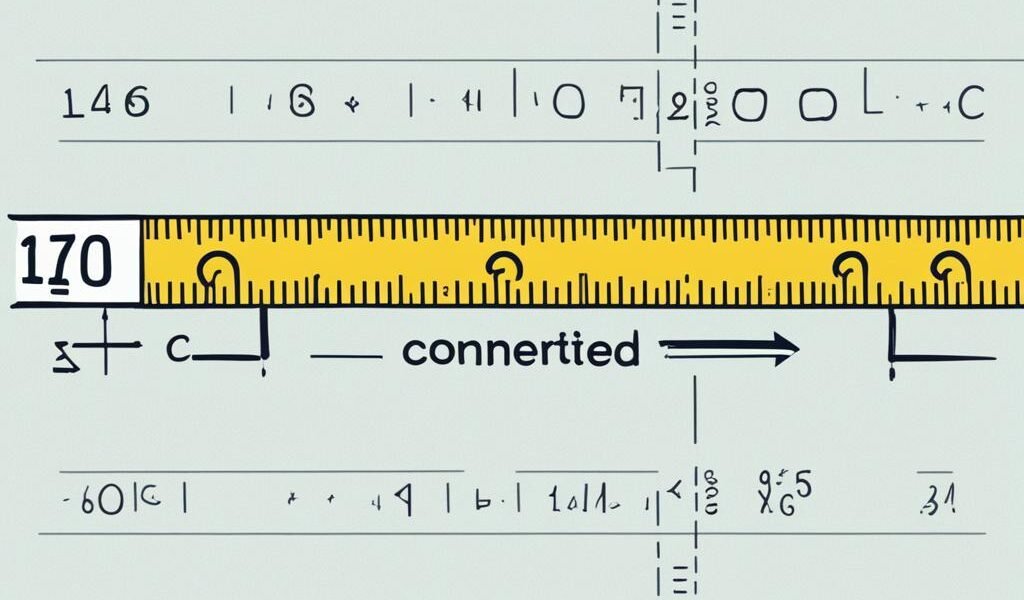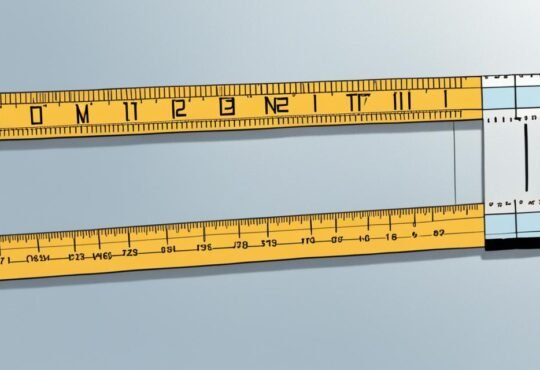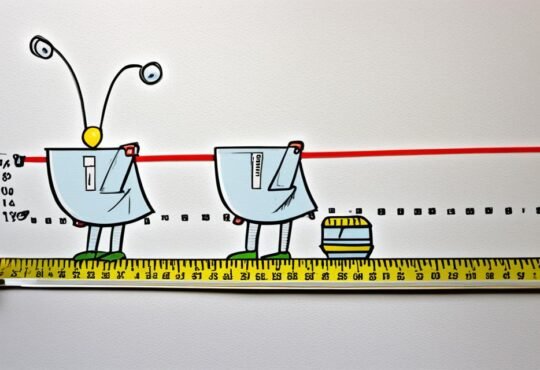
Convert 146cm to Meters – Quick & Easy Guide
Have you ever wondered how to convert 146cm to meters? Well, you’ve come to the right place! In this quick and easy guide, we will show you a simple formula to convert centimeters to meters effortlessly.
Now, let’s get started with the conversion process. Since 1 meter is equivalent to 100 centimeters, all you need to do is divide the length in centimeters by 100 to obtain the length in meters.
In the case of converting 146cm to meters, you divide 146 by 100, which gives you 1.46 meters. So, 146cm is equal to 1.46 meters.
Contents
- 1 Choosing the Right Snowboard Size – Sizing Guidelines
- 2 Peak Design Slide Lite Camera Sling Strap – Features and Uses
- 3 Choosing the Right Ski Length – Factors to Consider
- 4 Conclusion
- 5 FAQ
- 5.1 How do I convert 146cm to meters?
- 5.2 Is there a calculator to convert 146 centimeters to meters?
- 5.3 What is the formula for converting centimeters to meters?
- 5.4 Can you provide a conversion table for cm to meters?
- 5.5 How many meters is 146cm?
- 5.6 What factors should I consider when choosing the right snowboard size?
- 5.7 What are the sizing guidelines for snowboards?
- 5.8 Can you provide information about the Peak Design Slide Lite camera sling strap?
- 5.9 How do I choose the right ski length?
Key Takeaways:
- To convert 146cm to meters, divide the length in centimeters by 100.
- 146cm is equal to 1.46 meters.
- Use the simple formula: Meters = Centimeters / 100.
- Remember that 1 meter is equivalent to 100 centimeters.
- Keep this conversion in mind for your future reference.
Choosing the Right Snowboard Size – Sizing Guidelines
When it comes to snowboarding, selecting the appropriate snowboard size is crucial for optimal performance and enjoyment on the slopes. The right snowboard size is determined by various factors, including your weight, height, boot size, and intended riding style. To ensure you choose the perfect snowboard size, follow these sizing guidelines:
- Consider your weight: As a general rule of thumb, selecting a snowboard based on your weight is essential. Heavier riders typically require longer and wider boards with greater stability, while lighter riders may benefit from shorter and more maneuverable boards.
- Take your height into account: Your height is another critical factor in determining the right snowboard length. Taller individuals may prefer longer boards for enhanced stability, while shorter riders may opt for shorter boards for improved maneuverability.
- Factor in your boot size: Ensure that the snowboard’s width accommodates your boot size effectively. If your boots extend beyond the edges of the board, it can lead to an unstable ride and hinder your overall control.
- Consider your riding style: Different riding styles require specific snowboard shapes and lengths. For example, directional freeride boards are typically longer and provide stability for riding at higher speeds and in varied terrain. On the other hand, directional twin boards can be shorter in length, suitable for all-mountain and freestyle riding.
Remember to consult a snowboard size chart from the manufacturer or retailer to guide you in making an informed decision. Each brand may have its own recommendations based on their snowboard designs and intended uses.
To give you a visual representation, refer to the snowboard size chart below:
| Rider Weight (lbs) | Snowboard Length (cm) |
|---|---|
| 90-120 | 130-140 |
| 120-150 | 140-145 |
| 140-180 | 145-152 |
| 160-200+ | 152-160+ |
Keep in mind that these chart measurements are general guidelines, and individual preferences may vary. Always take into consideration your unique body characteristics, riding ability, and personal comfort when selecting a snowboard size.
Peak Design Slide Lite Camera Sling Strap – Features and Uses
The Peak Design Slide Lite camera sling strap is a versatile and low-profile strap designed for use with mirrorless and smaller DSLR cameras. It offers a range of features that make it the perfect companion for photographers on the go.
Key Features
- Ultra-Smooth Webbing: The Slide Lite strap features ultra-smooth webbing that glides across your body, ensuring quick and easy access to your camera when you need it most.
- Multiple Carry Styles: With its innovative design, the Slide Lite strap can be worn in various ways to suit your preferences and shooting style. Whether you prefer a stable sling-style, a comfortable shoulder strap, or a classic neck strap, the Slide Lite has you covered.
- Quick Adjusters: The strap is equipped with dual quick adjusters, allowing you to rapidly adapt the length and position of the strap to match your carry style and body type.
- Superior Strength: Built to withstand the demands of professional photography, the Slide Lite strap is rated to withstand more than 90kg (200+lbs) of force. This ensures that your gear remains secure and protected, even in challenging shooting situations.
- Peak Design Compatibility: The Slide Lite strap is fully compatible with other Peak Design products, including pouches, capture clips, and tripods. This seamless integration allows you to create a comprehensive camera-carrying system that suits your specific needs.
“The Slide Lite camera sling strap offers unmatched versatility and functionality for photographers. Its sleek design and thoughtful features make it an excellent choice for anyone in need of a reliable and comfortable camera strap.”
Whether you’re a professional photographer or an enthusiast, the Peak Design Slide Lite camera sling strap is an ideal accessory for your mirrorless or smaller DSLR camera. Its ergonomic design, durable construction, and customizable features ensure both comfort and convenience while shooting. Take your photography to the next level with the Peak Design Slide Lite camera sling strap.
| Camera Strap Styles | Camera Strap Adjustment | Camera Strap Features |
|---|---|---|
| Sling-style | Quick adjusters | Ultra-smooth webbing |
| Shoulder strap | Adaptable length | Multiple carry styles |
| Neck strap | Customizable position | Superior strength |
Choosing the Right Ski Length – Factors to Consider
When it comes to choosing the right ski length, there are several factors that you need to consider. Determining the correct ski size is crucial for your skiing experience, as it affects your stability, maneuverability, and overall performance on the slopes. By taking into account your height, weight, skiing ability level, ski style, and ski waist width, you can make an informed decision that enhances your skiing experience.
Generally, the ski length should be between your chin and the top of your head. This range provides a good balance between control and stability, allowing you to enjoy your time on the mountain. However, it’s important to note that different ski styles and ability levels may require variations in ski length.
If you are a beginner skier, opting for shorter skis can be beneficial. Shorter skis are more maneuverable and easier to control, which helps build your confidence and improve your technique. As you progress and gain more experience, you can consider transitioning to longer skis that offer increased stability and higher performance.
Ski waist width is another crucial aspect to consider. The waist width refers to the width of the ski at its narrowest point, typically under the binding. The width of the ski affects its turning radius and performance in different snow conditions. Wider skis provide better floatation in deep powder, while narrower skis offer quicker edge-to-edge transitions on groomed slopes.
It’s also important to factor in your skiing ability level and style. Different ability levels may require skis with specific qualities. For beginners, skis with a softer flex are more forgiving and easier to turn. As you advance to an intermediate or advanced level, skis with a stiffer construction can provide more stability and responsiveness at higher speeds.
Choosing the Right Ski Length – Quick Tips:
- Consider your height and weight: Choosing a ski length that matches your physique helps ensure optimal performance.
- Take your skiing ability level into account: Beginners may prefer shorter skis for better control, while advanced skiers may favor longer skis for increased stability.
- Think about your skiing style and terrain preference: Different ski styles, such as all-mountain, powder, or groomer skis, may require varying ski lengths for the best performance.
- Pay attention to ski waist width: A wider waist width provides better floatation in deep snow, while a narrower waist width offers quicker edge-to-edge transitions on groomed slopes.
Remember, choosing the right ski length is a personal decision that depends on various factors. It’s always a good idea to consult with a knowledgeable ski professional who can guide you through the selection process and ensure you find the perfect ski size for your needs.
Conclusion
Choosing the right measurements for your outdoor gear is crucial to ensuring a comfortable and enjoyable experience. Whether you’re converting centimeters to meters or selecting the appropriate size for a snowboard or ski, understanding the key factors and guidelines is essential.
In the case of converting 146cm to meters, a simple formula comes to the rescue. By dividing the length in centimeters by 100, you can easily obtain the equivalent length in meters. In this case, 146cm is equal to 1.46 meters.
When it comes to snowboarding, selecting the right size involves considering various factors such as rider weight, height, boot size, and intended use. Different board shapes and styles have specific sizing guidelines to optimize performance and control on the slopes.
Similarly, choosing the appropriate ski length requires taking into account factors like height, weight, ability level, ski style, and terrain preferences. By considering these aspects and referring to size charts, you can find skis that match your unique needs and enhance your skiing experience.
FAQ
How do I convert 146cm to meters?
To convert 146cm to meters, you divide the length in centimeters by 100. In this case, dividing 146 by 100 gives you 1.46 meters.
Is there a calculator to convert 146 centimeters to meters?
Yes, there are many online calculators available that can convert centimeters to meters. You can simply input 146 centimeters into the calculator, and it will give you the equivalent length in meters.
What is the formula for converting centimeters to meters?
The formula for converting centimeters to meters is simply dividing the length in centimeters by 100. This will give you the length in meters.
Can you provide a conversion table for cm to meters?
While there isn’t a specific conversion table for centimeters to meters, you can use the formula mentioned earlier to convert any length in centimeters to meters. Simply divide the length in centimeters by 100 to get the length in meters.
How many meters is 146cm?
146cm is equal to 1.46 meters.
What factors should I consider when choosing the right snowboard size?
When choosing the right snowboard size, consider factors such as rider weight, rider height, boot size, and intended use. Different snowboard shapes and styles may require different sizing guidelines. It’s important to consider these factors to ensure the best performance and comfort on the slopes.
What are the sizing guidelines for snowboards?
Snowboards should be sized based on factors such as rider weight, rider height, boot size, and intended use. Directional freeride boards are typically longer and should be sized based on weight and boot size. Directional twin boards can be ridden shorter than directional freeride boards. Alternative freeride boards are designed to be ridden substantially shorter. The Surf Series models have their own sizing rules.
Can you provide information about the Peak Design Slide Lite camera sling strap?
The Peak Design Slide Lite camera sling strap is a versatile and low-profile strap designed for use with mirrorless and smaller DSLR cameras. It features ultra-smooth webbing that glides across the body for quick and easy access to the camera. The strap can be worn in a stable sling-style, as a shoulder strap, or as a neck strap. It has dual quick adjusters for rapidly adapting the strap to any carry style or body type. The strap is rated to withstand more than 90kg (200+lbs) of force and is fully compatible with Peak Design pouches, capture clips, and tripods.
How do I choose the right ski length?
Choosing the right ski length depends on several factors, including height, weight, skiing ability level, ski style, and terrain preference. Generally, skis should be sized between the chin and the top of the head. Beginner skiers may want to choose shorter skis, while advanced skiers may prefer longer skis. Ski waist width, turning radius, and rocker type also play a role in ski selection. Different ability levels may require skis with different qualities, such as softer flex for beginners and stiffer construction for advanced skiers.







